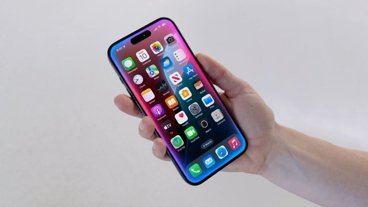Mac sales
Citing its own market research and numbers from NPD, research analyst Gene Munster of Piper Jaffray has released a report estimating Mac shipments at 2 to 2.2 million units for the three-month period ending March, in line with the Street consensus of 2.2 million units.
That's -6% growth compared to the nearly 2.3 million Macs Apple sold in its year-ago quarter. Munster also notes that last year, Apple had just launched the MacBook Air; this year, there were no mainstream Macworld Expo hardware introductions to boost sales in the quarter.
Despite the lack of growth in Mac sales over last year, the report stated "We believe this data will be perceived as a neutral or a slight positive given the uncertainty surrounding the Mar-08 quarter."
Desktop Mac sales are down the most over last year, reflecting warnings Apple presented in its latest investor conference call citing education and government markets hit hardest by recession-related cuts. Piper Jaffray's models indicate that sales of MacBook Pros actually grew over last year however, taking some of the bite out of those lost sales.
In the previous quarter ended December, Apple reported Mac sales growth of 9%, in contrast to the shrinking overall market for generic PCs as reported by often-cited market research firm IDC. With Apple expected to post anywhere from -13% to -4% growth for this quarter over a year ago, results for the generic PC market are likely to be significantly worse. Piper Jaffray's figures suggest -2% growth in the summer quarter for Apple, flat sales in the fall, and a return to unit growth by the winter.
iPod, iPhone and Apple TV sales
The report also targeted iPod sales of 9 to 10 million units; Street consensus is 9.5 million. This reflects growth of -15% to -6% over last year's sales of 10.6 million iPods.
The group is also modeling for iPod average selling prices (ASP) to fall slightly, reversing an upward trend in ASPs as users moved toward more expensive iPod models such as the high end iPod touch during the recent holiday shopping season. Apple does not break down iPod sales reports by model.
Munster said it was difficult to predict ASPs from NPD's data, but that "this data suggests that the mix of iPod touches may exceed our expectations in the Mar quarter." One factor pushing sales of the iPod touch is the availability of apps from the iPhone App Store. Apple has been focusing on gaming for the touch in its iPod marking.
iPhone sales are forecast to reach 4.4 million, representing significant growth over last year's first quarter sales of 1.7 million and up slightly over the winter quarter. Apple TV is similarly expected to again sell more than three times its sales in the year ago quarter as it did in the winter quarter, although Apple continues to watch the market as a "hobby" and still does not view the segment as a primary business.
Combined, Apple's total Q2 sales are expected to achieve 4.8% year over year growth, down tremendously from the 42% growth it experienced last year but above the level of growth anticipated for the battered PC and consumer electronics industry.
 Prince McLean
Prince McLean



-xl-m.jpg)


-m.jpg)






 Amber Neely
Amber Neely
 William Gallagher
William Gallagher
 Malcolm Owen
Malcolm Owen

 Mike Wuerthele
Mike Wuerthele


 Thomas Sibilly
Thomas Sibilly








42 Comments
I wish the never ending good news about Apple would be reflected in AAPL stock value!
Does not look like entirely good news to me. Keep your fingers crossed that there will be no more bad news.
I hope that the current situation will bring Apple closer to the ground in some respects, e.g iPhone worldwide distribution model.
If Apple update their desktop machines more than once a decade they might sell more.
I thought one of the advantages of moving to Intel would be more regular specification bumps between the major annual upgrades.
If Apple update their desktop machines more than once a decade they might sell more.
I thought one of the advantages of moving to Intel would be more regular specification bumps between the major annual upgrades.
I used to say that till I shelled out $10,000 for a late model (as they called it) Mac Pro 8 core / dual 30 ACD and tons of RAM and 4 1 TB internal drives and GT 8800 cards etc ... now for some strange reason I have this feeling I don't want to see a new Mac Pro just yet ... strange isn't it?
I've been to the local mall twice since Valentine's Day. The mall has been busy since it's school vacation week here. However, the Apple store has been absolutely crammed full of people. There are as many people in there as during the Christmas rush.
I didn't stick around long enough to determine if they were buying. However, I did note that the MacBooks seemed to be the most popular item by far.
The second most popular section of the store was the accessories section. This jives with the sentiment that people are spending less.
The good news here is that the Apple brand is still strong and the Apple stores are doing their part to build awareness.